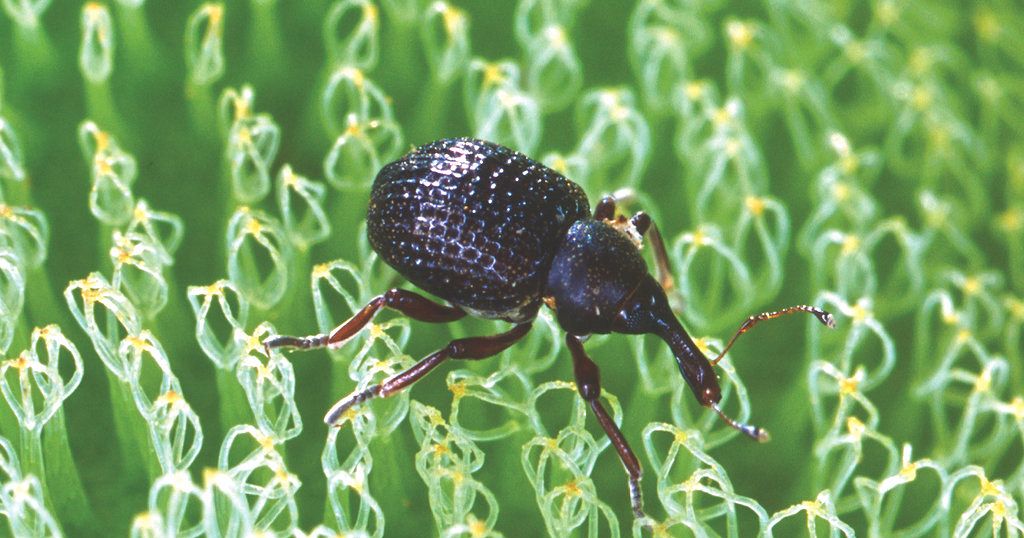Climate-smart seeds cultivate hope for Kenya’s agricultural future

These are no ordinary beans – they’re climate-smart beans.
The seeds could be the answer to growing crops as the world’s weather shifts.
In a pioneering collaboration between scientists from the Kenya Agricultural and Livestock Research Organization (KALRO) and the Alliance of Bioversity International and CIAT, an initiative is underway to popularize a new bean variety tailored for Kenya’s diverse climatic conditions.
Dubbed “Nyota”, meaning “star” in Kiswahili, these climate-smart beans signify more than just agricultural resilience; they symbolize a beacon of hope for a sustainable future amidst the challenges posed by climate change.
David Karanja, a bean breeder and National Coordinator for Grains and Legumes at KALRO, sheds light on the meticulous process behind developing these resilient varieties.
“When doing climate smart bean varieties, you start with parents of known characteristics, like drought tolerance, heat and dry. One of the varieties we have is KAT Bean 1 is parent, then we have varieties like GLP 2 that grows in a lot of areas. Then we also combine with varieties that have high levels of iron and zinc. You do the crosses in the screen house where you take the parents and keep on crossing and backcrossing until you get the variety you require before you take them for multi-location trials,” he says.
Kenya’s agricultural landscape presents a spectrum of challenges, from arid lowlands to cold, dry highlands, each with its unique climatic demands.
One focus with these beans is to make sure drought doesn’t kill them off before they’ve had time to flourish.
“We are in the lowlands, there’s heat and lack of adequate rainfall. So when we are trying to make the varieties drought tolerant, we work towards breeding varieties that will escape the terminal drought. That means the variety has to grow within a very short period so that it can escape the drought. So basically most of them, like the bean varieties that we work with, they flower within 30 days and mature within 70 days. Within that period, the early cessation of rainfall, then that bean will have matured and be harvested,” says Karanja.
But there are still challenges, including disease pressures and soaring demand for seeds outpacing the current supply.
Josephine Syanda, a research scientist at KALRO, underscores the market-driven approach to breeding, emphasizing the importance of considering consumer preferences and cooking times.
“When we are breeding, we normally take into account the aspect of the market. Because the cooking time will give us varieties that cook faster and when they cook faster, they reduce the cost of fuel, like for example gas and firewood, which probably will reduce the cost of living for the farmers,” Syanda remarks.
The introduction of Nyota beans holds immense promise for Kenya’s agricultural sector.
By enlisting farmers to cultivate these resilient varieties, the initiative aims to bolster national bean production, which currently falls short of meeting the annual consumption demand.
Benson Gitonga, a farmer, has adopted Nyota beans and has witnessed remarkable increases in yields and profitability.
“I can harvest 9 to 12 bags from an acre of land, unlike other varieties where I would only get 5 to 7 bags. The difference upon comparison is substantial. When I bring beans to the market, they consistently fetch a good price, selling for Kenya Shillings 200 per kilogram, while other varieties often go for Kenya Shillings 100. Customers purchasing for home use particularly appreciate its qualities, as it boasts low flatulence levels, making it an appealing choice for many,” he says.
According to Karanja, Kenya’s annual bean production is 600,000 metric tonnes, while consumption is at 755,000 metric tonnes, leading to the need for imports.
To meet the burgeoning demand for Nyota beans, KALRO has licensed several seed companies to produce and market the seeds.
Kenya boasts about 26 registered seed companies, with 23 being local and three multinational, including Syngenta, Monsanto, and the East African Seed Company.
These companies aim to produce and distribute superior seeds for commercial and domestic use.
Approximately two-thirds of seeds planted in Kenyan farms are sourced from formal channels, with the government advocating for the use of licensed seeds to ensure quality and mitigate the spread of seed-borne pests and diseases.
However, the government’s strict regulations on seed exchange have drawn criticism from environmental groups such as Greenpeace Africa.
Elizabeth Atieno Opolo, a food campaigner at Greenpeace Africa, has concerns about limiting farmers’ access to indigenous seeds.
Critics argue that legislation limiting farmers’ access to indigenous seeds perpetuates dependency on commercially owned seeds, thereby exacerbating financial burdens on small-scale farmers.
“Most of these improved seeds (referring to GMO seeds) that we see they usually get their primary plantic genetic resources from these indigenous seeds. So they go back to our seeds, they take our seeds and then they go to the lab and do whatever they do themselves and then they sell back these seeds to the farmers and then you find that at the end of the day farmers have to be buying these seeds every season because they can’t replant these seeds. So they have to keep on buying seeds every new season and that is keeping farmers in a cycle of debt,” says Opolo.
Despite these challenges, proponents of climate-smart seeds maintain that innovation in breeding resilient varieties is crucial for safeguarding food security in the face of climate change.
By fostering collaboration between scientists, farmers, and policymakers, initiatives like Nyota beans offer a ray of hope for a more sustainable and resilient agricultural future in Kenya.
Source: Africanews















